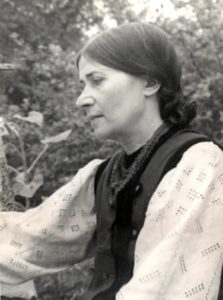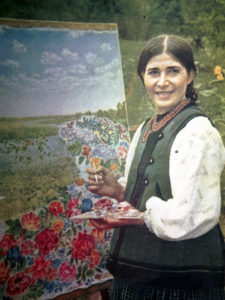
1900 - 1961
Kateryna Bilokur

description
A Ukrainian self-taught artist, graphic artist and master of decorative folk painting, People’s Artist of Ukraine (1956), a bright representative of naive art.
The work of the rural artist is among the high achievements of the Ukrainian culture of the 20th century; it is the subject of the study of art historians. There are two exhibitions at the Yagotinsky local history museum: the pictorial and graphic heritage of Bilokur; the large hall of the State Museum of Ukrainian Folk Decorative Art is devoted to her works. In 1980, the TV show “Katerina Bilokur” was released; in 1983, composer L. Dichko created the ballet of the same name; in 1986, the documentary movie “The Magic World Bilokur” was filmed; in 1989 – the two-part art film “Disobedient”; in 2009, the play “Two Indigo Flowers” was staged at the Franco Theatre. In 1990, the annual Bilokur Prize was established; it is awarded on the day of St. Catherine.
Key ideas:
– K. Bilokur realized her vocation when she was a teenager. In order to save money, the well-off family decided not to send the talented girl who learned to read and to write herself to school. This circumstance did not allow her to enter a specialized educational institution. The desire to draw was so strong that painting with charcoal was not enough for her; Kateryna secretly made paints from beets, three-lobe beggar ticks and other plants. Overcoming prohibitions, suffering from being beaten by her parents and offended by the villagers, she painted cheerful compositions. She never cut flowers, which she loved to depict. Amazing combinations of spring, summer and autumn plants and fruits in one picture were achieved as a result of working on a picture for several months.
– The artist worked selflessly, but not in a hurry. For example, she painted six dahlia flowers on the canvas “Kolkhoz Field” in three weeks; she felt satisfied when finished painting them. Usually she filled the entire base with elements of the composition, as if trying to use all the corners of the canvas. At the same time, she did not strive for symmetry, even if it was an ornamental plot.
– The master rarely worked with a pencil and watercolor; she was attracted by the richness of oil paint. Even the names — cobalt, cinnabar and ultramarine — seemed wonderful to her. She made brushes herself, selecting cat hairs of the same length; each color had its own brush.
– Apart from flowers, Kateryna painted many still-lifes. The abundance, juiciness of fruits and big breads are especially impressive due to the considerable food problems in Ukraine in those decades. In the two later versions of “Tsar Kolos”, created instead of the original work stolen in Paris, Kateryna, according to her confession, did not manage to draw the spikelets as masterfully as she did it in the hungry 1947.
– As an author of landscapes, Bilokur used watercolor and a more monochrome scale, put a special tenderness in the image of her native Bogdanovka and her hut.
– In the portrait genre, Kateryna is close to realistic graphics and painting. She depicts dignified figures, calm and thoughtful faces. Vividly honest seem to be her self-portraits. An old woman in a quilted jacket and a headscarf, tied “in a peasant manner”, wisely looks from pencil self-portraits with her expressive eyes that express the strength of her character, her thoughts and a considerable amount of sadness.
– The artist’s dream to paint a “fairy tale picture”, in which there would be storks carrying a child, met with a lack of understanding of those around her, who expected amazingly alive flowers from the master. That is why she “locked” her dream in the workshop room, where she did not let anyone in.
1900
1920
1930
1934
1939 - 1941
1944 - 1949
1950
1954
1961
The birth of the artist
She tried to enter the Mirgorod Art and Ceramics College
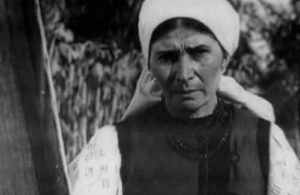
She became the head of the drama club

At the cost of stiffened legs, she received permission to paint
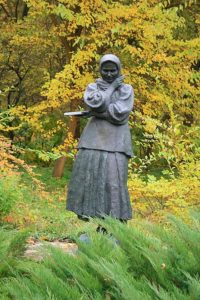
The trip to Moscow
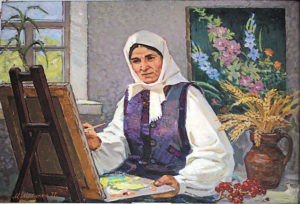
The artist was accepted into the Union of Artists of Ukraine
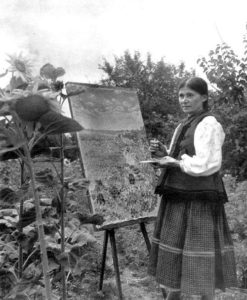
The period of the most fruitful creativity and recognition
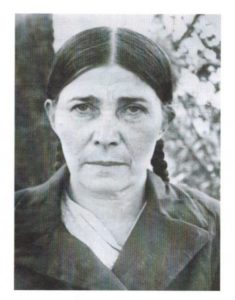
The Paris International Exhibition
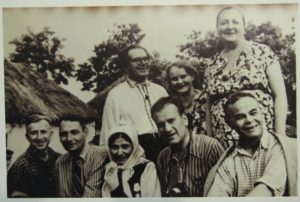
The death of the artist
